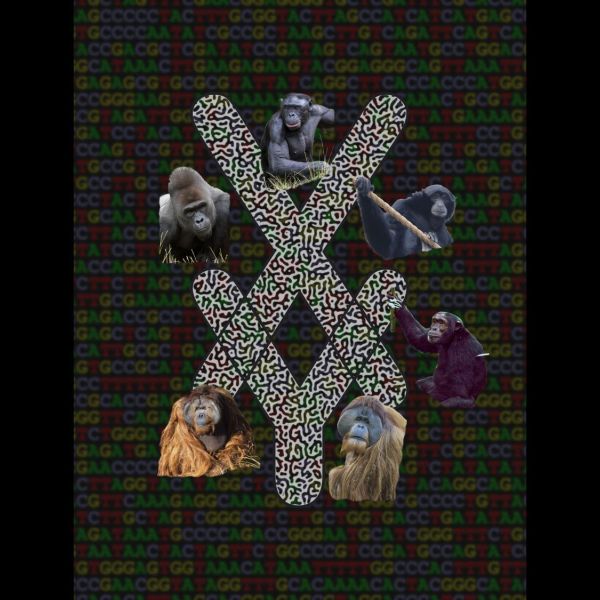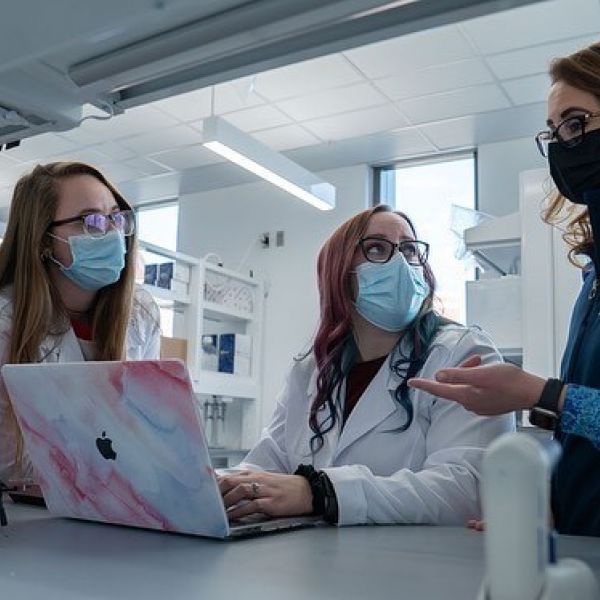News

May 30, 2024
Denise Okafor named Huck Early Career Chair in Biophysics
Denise Okafor, assistant professor of biochemistry and molecular biology in the Eberly College of Science at Penn State, has been awarded a Dorothy Foehr Huck and J. Lloyd Huck Early Career Chair in Biophysics.
Full Article

May 29, 2024
Complete X and Y chromosome sequences of living great ape species determined
Newly generated, complete “end-to-end” reference genomes for the sex chromosomes of five great ape species and one lesser ape species — produced by an international collaborative team led by researchers at Penn State, the National Human Genome Research Institute and the University of Washington — highlight extremely rapid changes on the male-specific Y chromosome among ape species.
Full Article

May 24, 2024
Type 2 diabetes treatment found to impact fungal community in human gut
Penn State researchers have published findings showing the effects of Type 2 diabetes and metformin, a common treatment for that condition, effect the human gut mycobiome.
Full Article

May 06, 2024
Five faculty members honored with Evan Pugh University Professorships
Five Penn State professors—including Huck-affiliated faculty members Reka Albert, Vijaykrishnan Narayanan, and Clive Randall—have been named Evan Pugh University Professors, an elite and prestigious distinction conferred by the University on only 79 faculty members since the establishment of the designation in 1960.
Full Article

May 28, 2024
Réka Albert named Evan Pugh University Professor
Réka Albert, distinguished professor of physics and biology at Penn State, has been named an Evan Pugh University Professor, the highest honor that Penn State bestows on a faculty member.
Full Article

Apr 26, 2024
Penn State molecular biologist Ross Hardison named an AAAS Fellow
Ross Hardison, Academy Professor and professor emeritus of biochemistry and molecular biology, has been named a fellow of the American Association for the Advancement of Science (AAAS).
Full Article

Apr 16, 2024
Huck trainees recognized at graduate school awards
Four Huck graduate students were recognized with distinctions at the recent 2023-24 Graduate Student Awards, hosted by the Graduate School at Penn State.
Full Article

Apr 05, 2024
Forty graduate students honored with prestigious University awards
Forty Penn State graduate students were named recipients of Penn State’s most prestigious annual graduate student recognition awards, administered by the Graduate School in collaboration with several Penn State units.
Full Article

Mar 22, 2024
$1.6 M from NSF to improve models that inform marine protected areas
To better understand how populations of tropical reef fish are connected, the U.S. National Science Foundation has awarded a three-year, $1.6 million biological oceanography grant to a team co-led by Eric Crandall, assistant research professor of biology in the Penn State Eberly College of Science. This work aims to help improve models used in fisheries management and may guide the creation of new protected areas for marine species.
Full Article

Mar 07, 2024
Penn State biologist David Toews receives 2024 NSF CAREER Award
David Toews, assistant professor of biology, has been honored with a Faculty Early Career Development (CAREER) award from the U.S. National Science Foundation.
Full Article